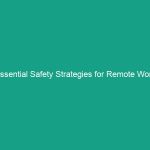Introduction
Good morning team! Today, we’re diving into a crucial topic that impacts all of us in the workplace: benchmarking Safety performance. Understanding how to measure and improve our Safety practices is key to creating a safer work Environment. Safety is not just a regulatory requirement; it’s about protecting our most valuable asset—our people. Let’s explore why benchmarking safety performance is essential and how we can apply Best Practices in our daily operations.
Understanding Benchmarking Safety Performance
So, what exactly is benchmarking safety performance? In simple terms, it’s a process of comparing our safety metrics and practices with industry Standards or Best Practices. This approach helps us identify gaps in our safety performance and areas for improvement. It’s important because it enables us to set realistic safety goals, monitor our progress, and ultimately reduce workplace incidents.
Many employees might think that safety benchmarking is only for safety managers or executives. However, every team member plays a vital role in this process. By understanding how our safety performance stacks up against others, we can contribute to a culture of continuous improvement.
Key Hazards, Risks, and Safety Considerations
When it comes to benchmarking safety performance, there are several key Hazards and risks to consider:
- Inadequate Training: Employees who are not properly trained in safety protocols are more likely to experience accidents.
- Failure to Report Incidents: Not reporting near-misses or accidents can prevent valuable insights into safety improvements.
- Ignoring Safety Equipment: Not using Personal Protective Equipment (PPE) can lead to serious injuries.
Ignoring safety protocols can have real-world consequences. For instance, a failure to report a near-miss incident can lead to a more severe accident down the line. It’s critical that we acknowledge these risks and take proactive steps to address them.
Best Practices, Procedures, & Actionable Advice
Now that we understand the importance of benchmarking, let’s explore some best practices to improve our safety performance:
- Establish Clear Safety Metrics: Define what success looks like in terms of safety. Common metrics include incident rates, near-miss reports, and employee training completion rates.
- Regular Safety Audits: Conduct frequent audits to assess compliance with safety protocols and identify areas for improvement.
- Engage Employees in Safety Discussions: Encourage open communication about safety concerns and suggestions for improvement. This can be done through regular team meetings or safety committees.
- Utilize Technology: Leverage safety management software to track incidents, training, and compliance. This can streamline the benchmarking process.
For example, let’s consider a company that implemented a new safety training program. They noticed a significant reduction in incidents after providing employees with hands-on training and regular refreshers. This case illustrates the effectiveness of investing in employee safety education.
Regulations, Standards, and Compliance
It’s essential to be aware of the Regulations and standards that govern Workplace Safety. Organizations such as OSHA (Occupational Safety and Health Administration) and ISO (International Organization for Standardization) provide guidelines that help ensure safety compliance.
Compliance with these standards is not just about avoiding penalties; it’s about creating a safe working environment. When we adhere to safety regulations, we protect ourselves and our coworkers from potential hazards.
Employee Engagement & Discussion
As we wrap up our discussion, I’d like to hear from you! What safety challenges have you encountered related to benchmarking safety performance? How can we improve our current practices? Engaging in these discussions helps us learn from each other and fosters a culture of safety.
Conclusion & Key Takeaways
To sum up, benchmarking safety performance is a vital process that helps us identify areas for improvement and enhances our overall Workplace Safety. By implementing best practices, staying compliant with regulations, and engaging in open discussions, we can create a safer work environment for everyone. Remember, safety is a shared responsibility, and your involvement is crucial.
Thank you for your attention and commitment to safety. Let’s continue to prioritize safety in everything we do!


